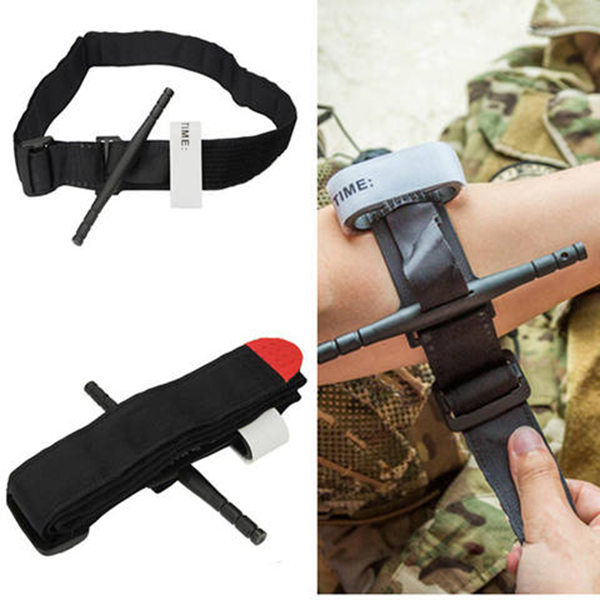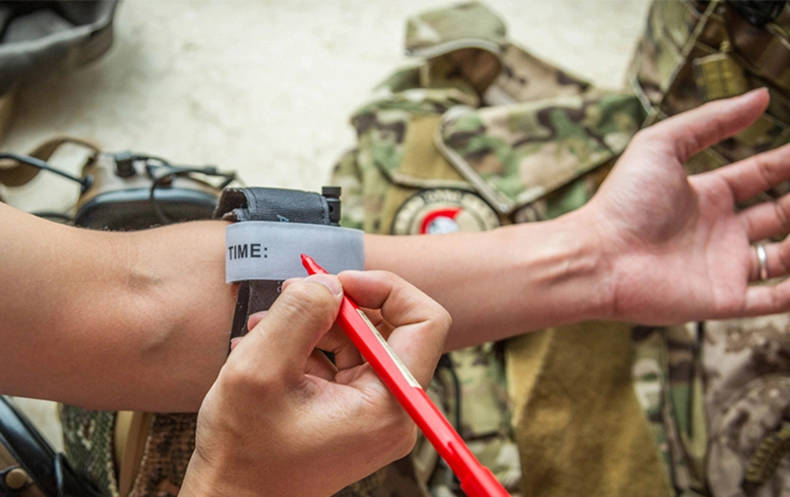How to use a tourniquet?
The use of a tourniquet is simple, but the principles of its use are complex. Only when these principles are accurately understood and used correctly can lives and limbs be saved, otherwise amputation and disability will result.
Precautions for using tourniquet
1. Before wearing a tourniquet, the injured limb should be elevated to promote venous blood flow back and thus reduce blood loss.
2. The upper tourniquet should be positioned as close to the bleeding site as possible, provided that it is effective in stopping bleeding. However, the use of a tourniquet in the middle of the upper arm is prohibited because the radial nerve crosses the surface of the humerus.
3. The tourniquet should not be tied directly to the limb and the area where it is intended to be applied should be protected with a soft cloth pad such as a dressing and towel to protect the skin.

4. When tying a tourniquet, it is recommended that the tourniquet be tightened only at the point of arterial bleeding. Tightening of the upper band can easily cause damage to the skin, nerves, blood vessels and muscles at the tourniquet site and even cause necrosis of the distal limb, which is detrimental to the functional recovery of the injured limb.
The tape only compresses the vein and not the artery, blood cannot flow out and not only does not stop the bleeding, but can aggravate it. The criteria for a successful episiotomy is that the bleeding from the distal artery stops, the arterial pulsation disappears and the limb turns white.

5. The wearing of the tourniquet should be clearly marked and the wearing time should be clearly written near the tourniquet or on the skin. To prevent ischaemic necrosis of the injured limb, loosen the tourniquet for 1 to 2 minutes every 40 to 60 minutes.
When loosening the tourniquet, the movement should be slow and finger pressure is required to reduce bleeding. If the general condition of the casualty is poor, the wound is large and bleeding is heavy, the interval between releasing the tourniquet can be extended appropriately.
However, the tourniquet should not be applied for more than 3 hours in total, otherwise the distal limb will have difficulty surviving. If the injured person remains in transit to hospital for more than 9 hours, the tourniquet will not be released regularly thereafter, as the distal limb has no chance of survival.
Similarly, in first aid in earthquake areas, if an injured limb has been buried for too long, tissue necrosis has occurred due to lack of blood and oxygen. The compressed object is then removed and taken to hospital for further treatment.


